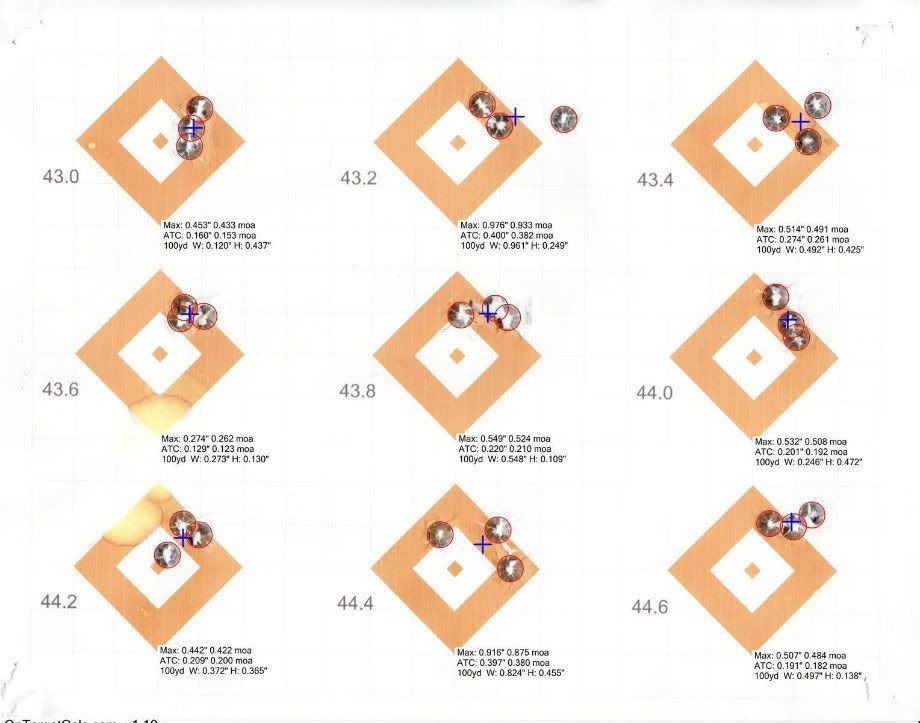Bullet: Hornady Amax 178
Powder: Varget (43.0 gr. - 45.1 gr.)
Rifle: Savage 110FP .308 (1:10 twist)
Brass: Lapua
Primer: CCI
What do you see? Looks like a good node from 43.0 to 43.6, and a good node from 44.2 to 44.8. Am I correct in concluding that 44.5 (Load #6) would then be my optimal charge weight?

Powder: Varget (43.0 gr. - 45.1 gr.)
Rifle: Savage 110FP .308 (1:10 twist)
Brass: Lapua
Primer: CCI
What do you see? Looks like a good node from 43.0 to 43.6, and a good node from 44.2 to 44.8. Am I correct in concluding that 44.5 (Load #6) would then be my optimal charge weight?


